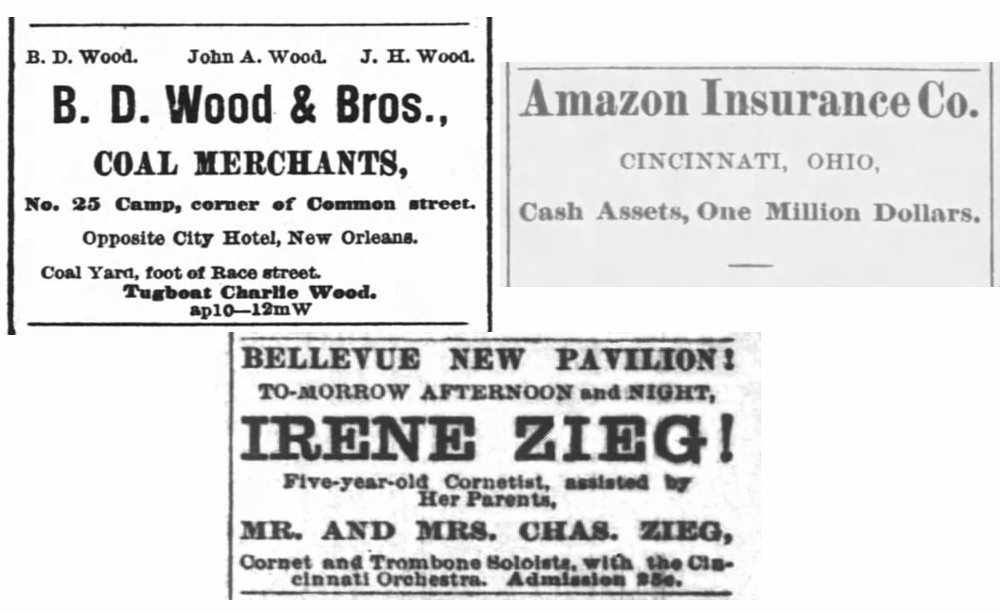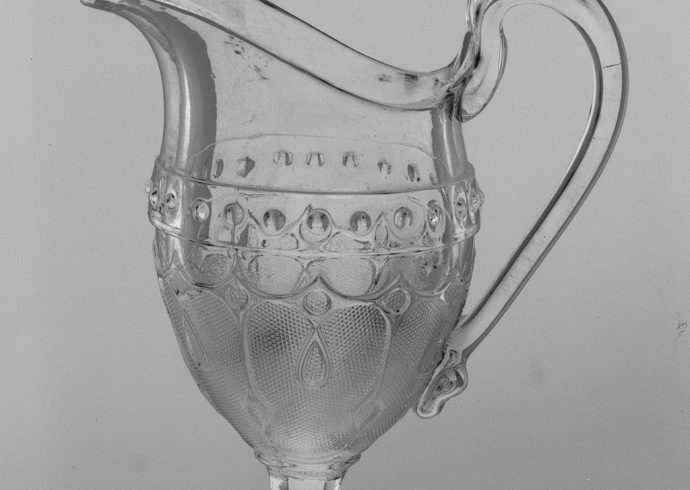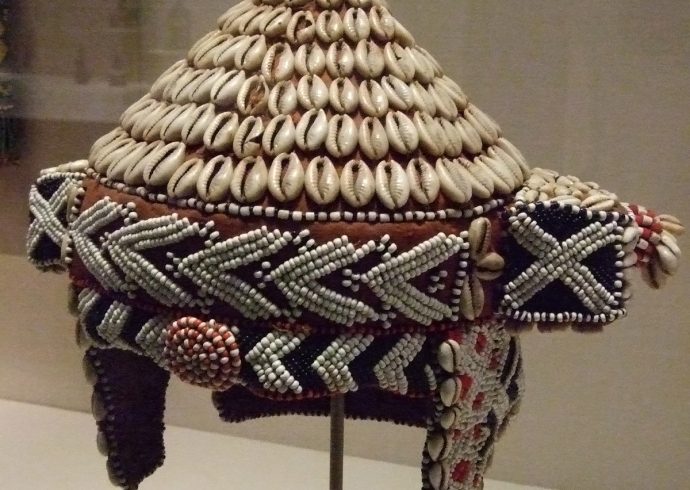
W. H. Maxwell Glass Paperweights with Advertising
William H. Maxwell was born in Ohio in 1845 before moving to Rochester, Pennsylvania near the glass factories. In 1876 he started a factory in Rochester with another glass worker by the last name of Brown, making glassware and specializing in clear glass paperweights with a design on the base bearing advertising for local and regional companies across the nation. During an era when art glass was in its infancy, the concept was certainly unique, and with Maxwell’s talent for inventiveness, held a number of patents dedicated to the art of glassmaking. One of these patents, dated 1876, include a tool for crimping glass. In 1882, Maxwell’s patent number 263,931 was for a specific method of glass paperweight manufacturing.
Some of his manufactured paperweights are marked Brown and Maxwell but those that are not marked are easily identified by the special method he used in making the weights as well as the advertising element of the paperweight. The process was simple enough: the company name and address to be advertised would be placed upon a narrow sheet of white glass then placed into a mold where the glass would encase the entire advertisement, a method patented by Maxwell. Maxwell also made one-of-a-kind paperweights for decorative use and they frequently contained the owner’s name, intending these paperweights as custom order items. These paperweights were hand decorated. Two such paperweights in existence have train designs in the glass.
One Maxwell paperweight dated 1881 was custom made, with a personal name and the word “Christmas” added to it. The base color of this paperweight is white, with cobalt blue and light blue lettering in the design. As an added touch, tan curlicues are suspended through the glass, probably to emulate snow falling. Another advertising paperweight dated 1887 bears the design of a white background and “Thos. Evans & Co., Crescent Glass Works, Pittsburgh” in black lettering. Still, a third personalized paperweight was made for a Miss Irene Zieg around 1883 or 1884, with an illustration of a cornet. The author of an article on Maxwell paperweights at Memories and Miscellany describes this paperweight, along with an image of it. What the author does not mention, perhaps unknown to him, is that Irene Zieg was a prodigy cornet player – at the tender age of five years old!
At some point a second Brown and Maxwell glass factory opened in Pittsburgh. Located on 25th St, the factory contained a four-pot furnace where glass labels were made, along with convex-shaped glass parts intended for the paperweights. A fire at his factory in 1879 pretty much put an end to the manufacture of these unique glass paperweights. According to Pittsburgh Daily Post, June 3, 1879, the fire began the night before at 11:00 PM as a result of an employee producing glass labels when a lamp suddenly exploded. The fire spread quickly which engulfed the entire glass factory building. The loss of the glass factory was evaluated to be around $1,200.00, or about $34,000.00 in 2021 dollars. In 1882, the Rochester glass factory location employed sixty men, making glass advertisement paperweights and other glass novelties.
The Maxwell glass company closed in 1883 after one of their furnaces broke down. According to The Wheeling Daily Intelligencer, April 21, 1883, the Pittsburgh factory assets were seized by the sheriff and sold off for $1,200. More mysteriously, on December 1, 1883, a fire gutted the Rochester glass factory during the hour of 6:00 PM, with a calculated loss at $20,000. Considering that the factory had not been in operation since August of that year, and the cause of the fire was unknown, insurance did cover the inexplicable loss. Given that some advertising paperweights were apparently still being manufactured by Maxwell after 1883 and signed by him, he may have produced these paperweights as a single-man operation versus the risk of another glass making factory.
Advertisers who appeared in W H Maxwell glass paperweights. Image Credits: The Times Picayune New Orleans September 4, 1880; The Tennessean February 27, 1876; The Cincinnati Enquirer May 24, 1884.


